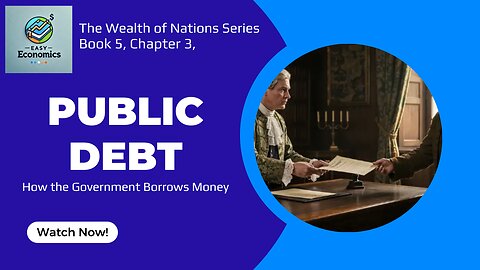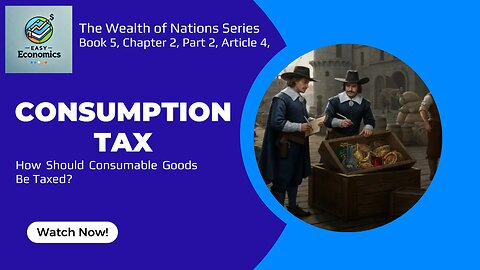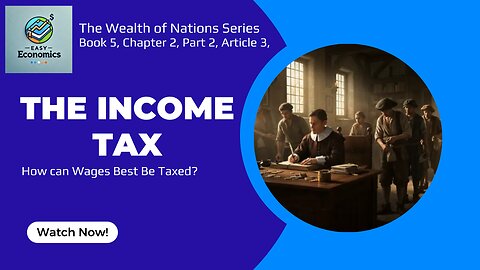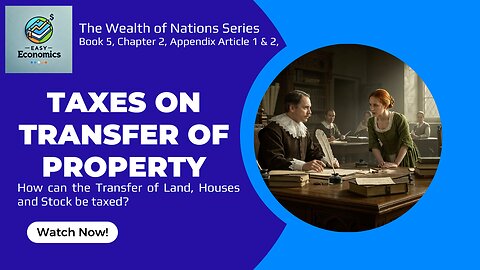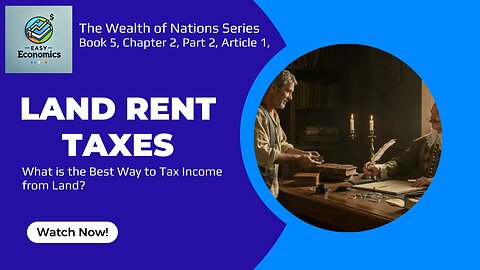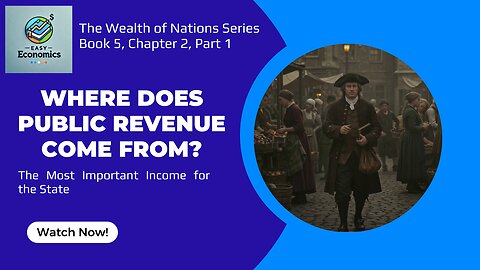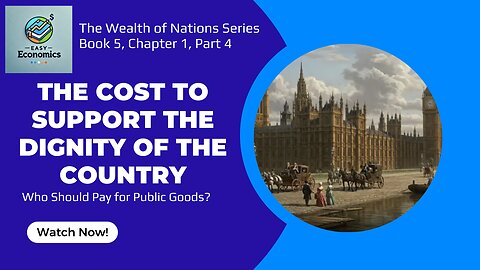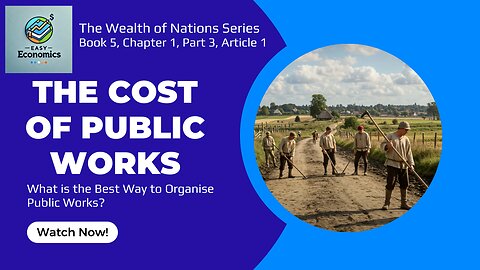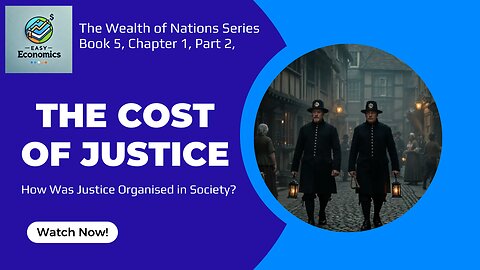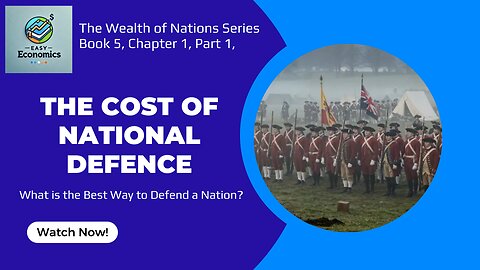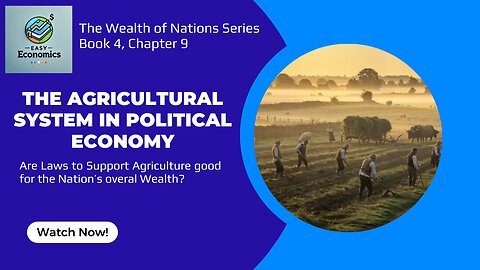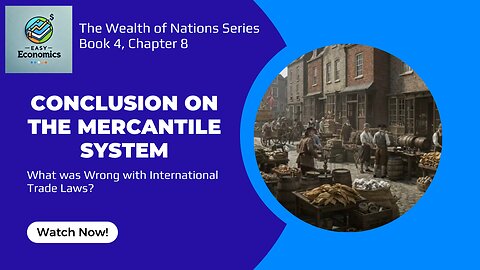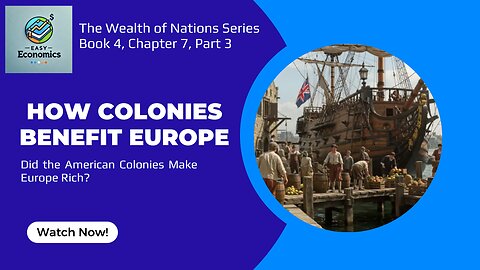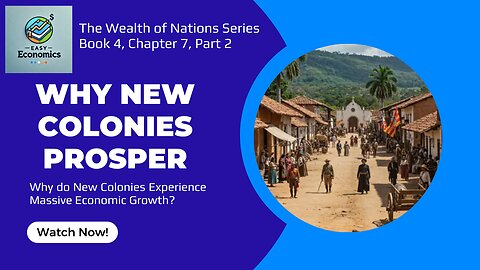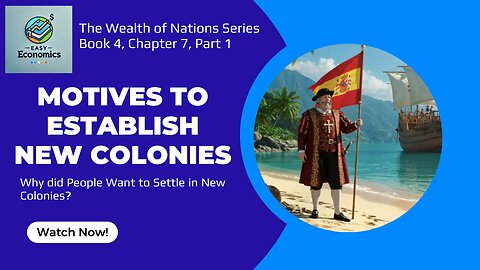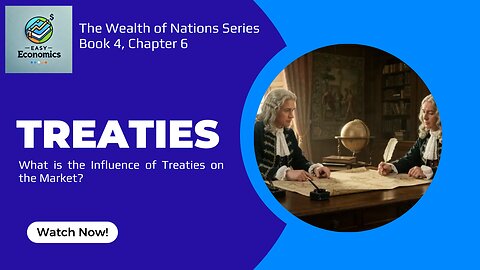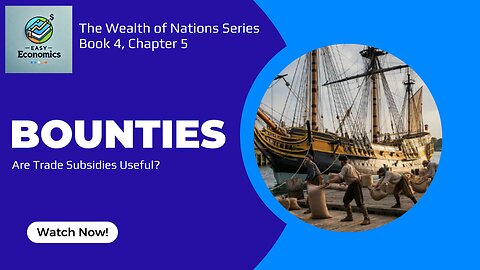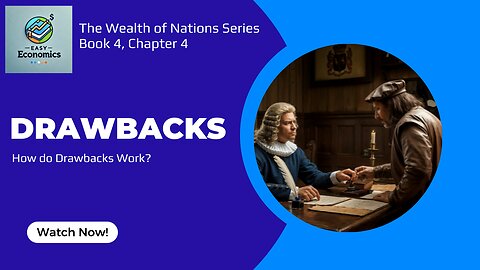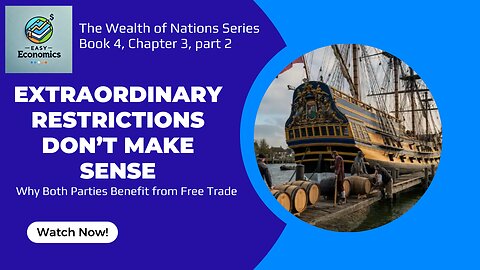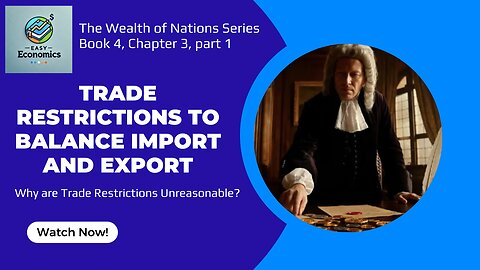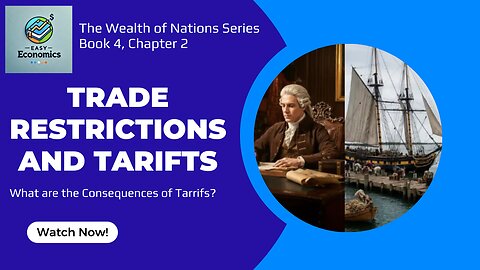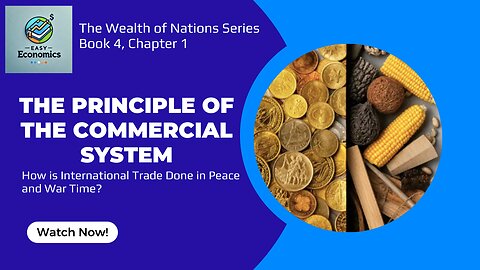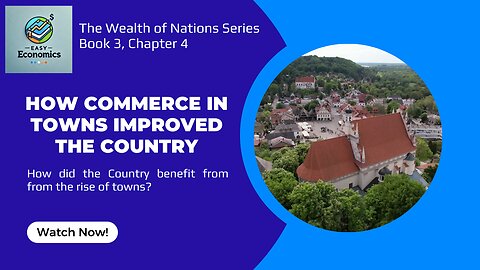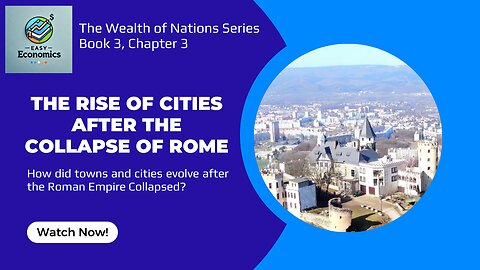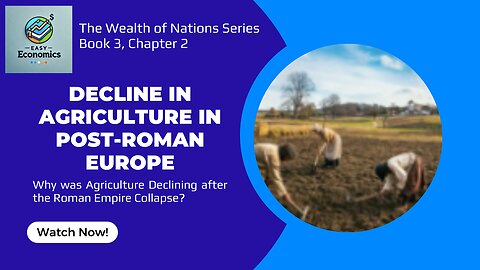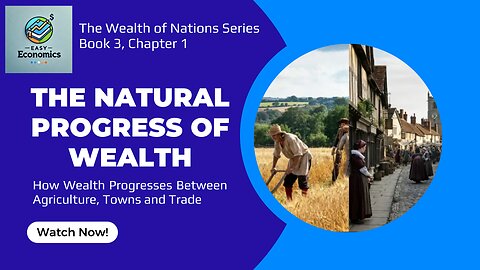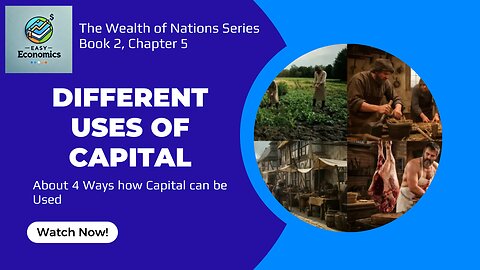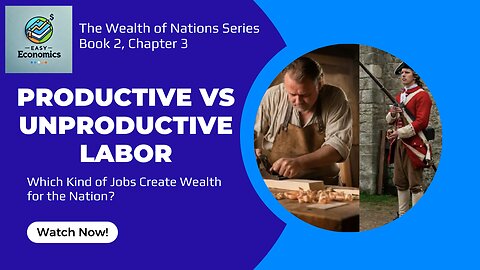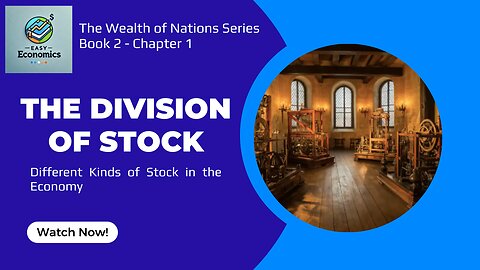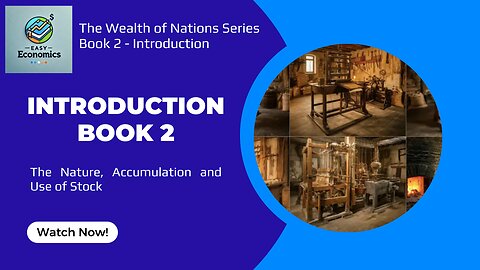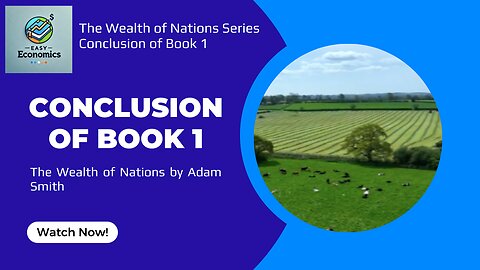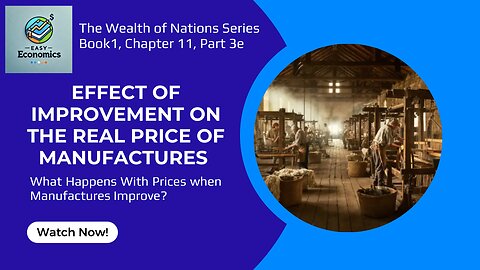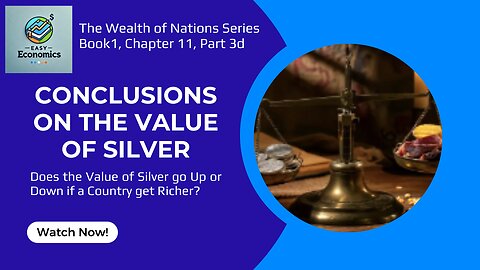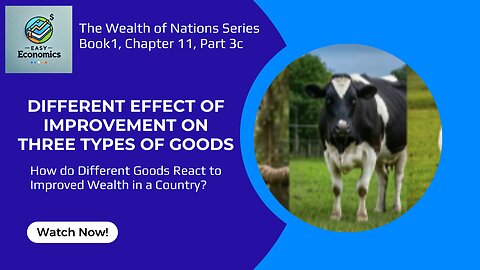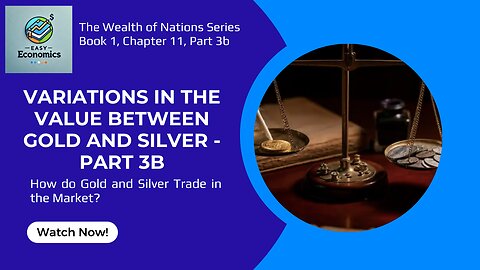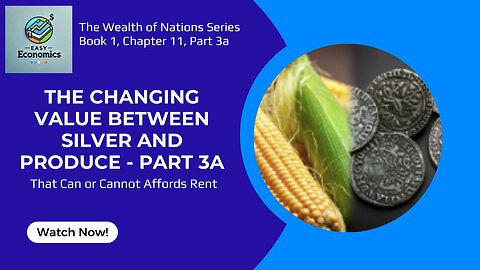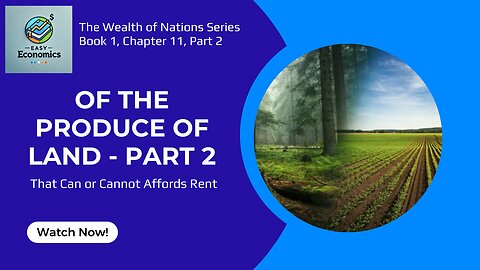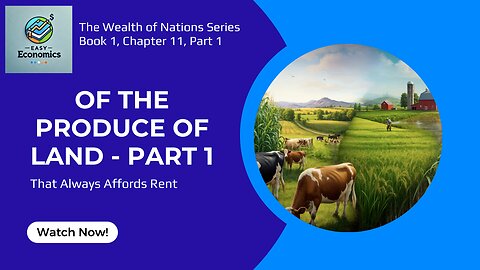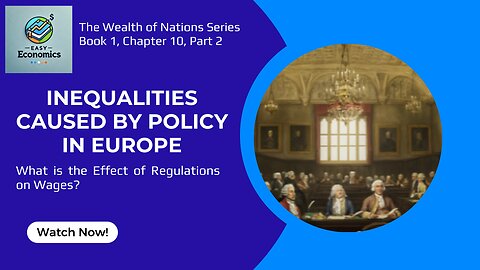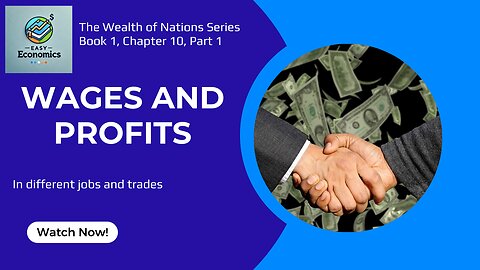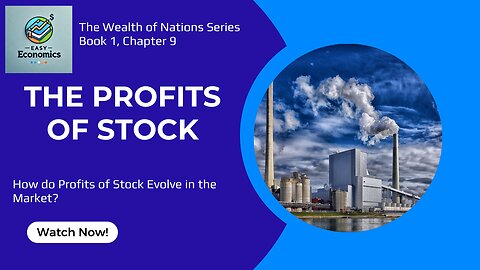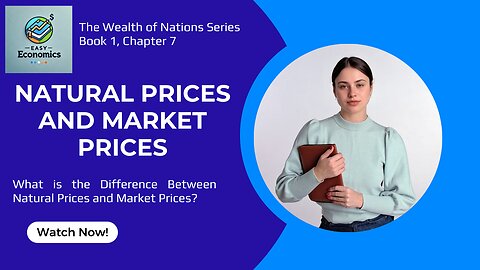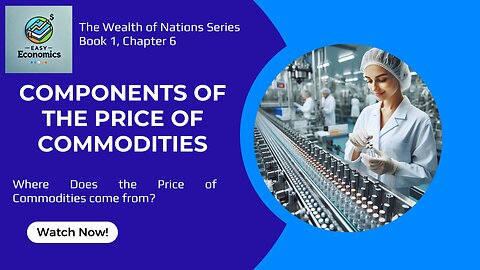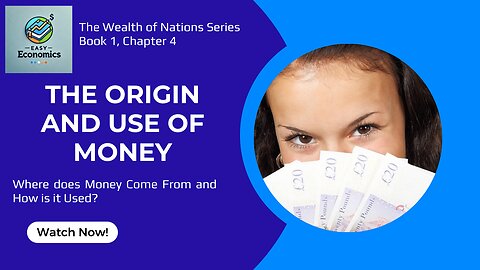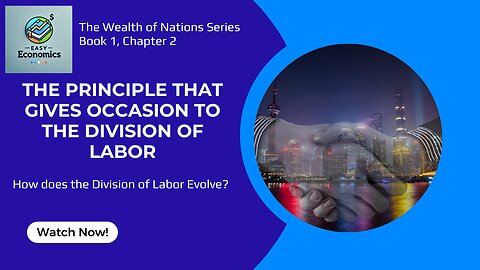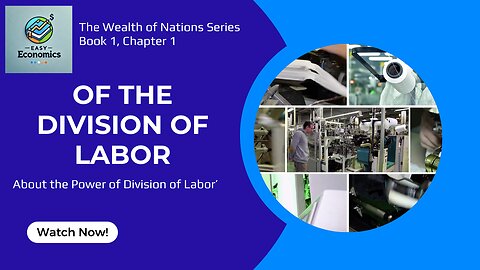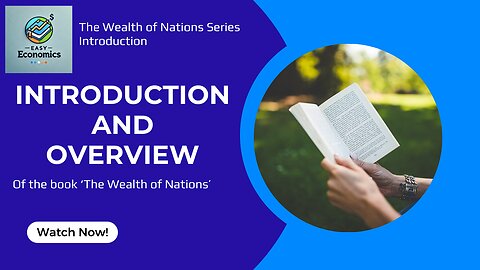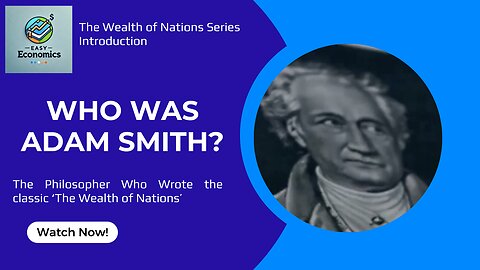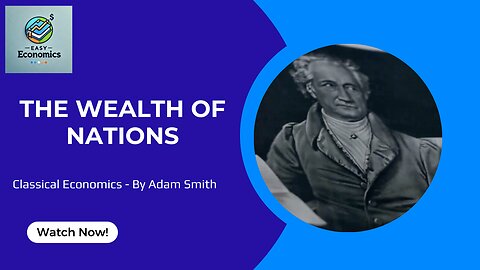Premium Only Content
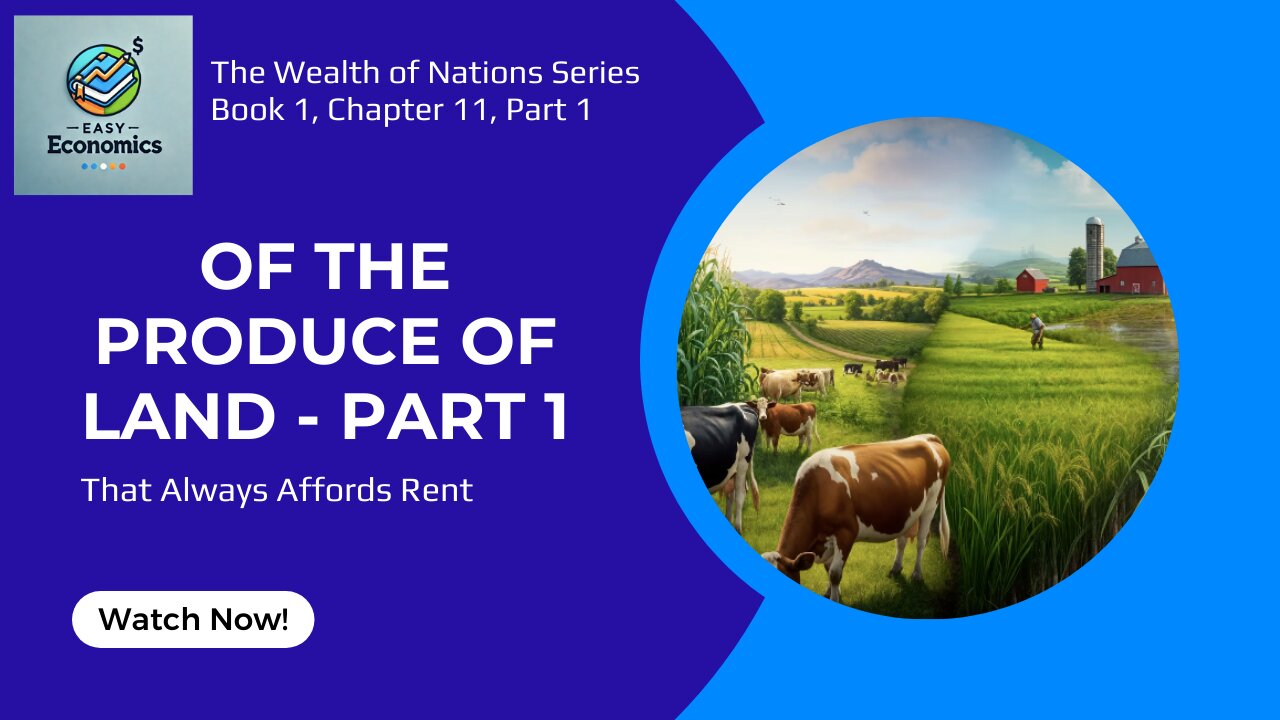
The Wealth of Nations Book 5 Chapter 1 - Public Debt
The Wealth of Nations Book 5 Chapter 2 Part 2 Article 4 - Taxes on Consumable Goods
The Wealth of Nations Book 5 Chapter 2 Part 2 Article 3 - Taxes on Wages
The Wealth of Nations Book Chapter 2 Appendix Article 1 & 2 - Taxes on Property Transfers
The Wealth of Nations Book 5 Chapter 2 Part 2 Article 2 - Taxes on Profits of Stock
The Wealth of Nations Book 5 Chapter 2 Part 2 Article 1 - Taxes on the Rent of Land
The Wealth of Nations Book 5 Chapter 2 Part 1 - Exploring Public Revenue Sources
The Wealth of Nations Book 5 Chapter 1 Part 4 - Who Should Pay for Public Cost?
The Wealth of Nations Book 5 Chapter 1 Part 3 Article 3 - The Cost of Religious Influence
The Wealth of Nations Book 5 Chapter 1 Part 3 Article 2 - The Real Cost of Education
The Wealth of Nations Book 5 Chapter 1 Part 3 Article 1 - The Expense of Public Works
The Wealth of Nations Book 5 Chapter 1 Part 2 - The Cost of Justice
The Wealth of Nations Book 5 Chapter 1 Part 1 - The Cost of National Defence
The Wealth of Nations Book 4 Chapter 9 - Systems in Political Economy
The Wealth of Nations Book 4 Chapter 8 - The Mercantile System's Hidden Flaws
The Wealth of Nations Book 4 Chapter 7 Part 3 - How Europe Benefits from American Colonies
The Wealth of Nations Book 4 Chapter 7 Part 2 - Why New Colonies Prosper
The Wealth of Nations Book 4 Chapter 7 Part 1 - The Motives for Establishing New Colonies
The Wealth of Nations Book 4 Chapter 6 - The Hidden Cost of Trade Treaties
The Wealth of Nations Book 4 Chapter 5 - Bounties, The Hidden Cost of Subsidies
The Wealth of Nations Book 4 Chapter 4 - Understanding Drawbacks in International Trade
The Wealth of Nations Book 4 Chapter 3 Part 2 - Why Extraordinary Restrictions Don't Make Sense
The Wealth of Nations Book 4 Chapter 3 Part 1 - The Unreasonableness of Import Restrictions
The Wealth of Nations Book 4 Chapter 2 - Restrictions on Goods that can be Produced at Home
The Wealth of Nations Book 4 Chapter 1 - The Principle of Commerce and Mercantile Systems
The Wealth of Nations Book 3 Chapter 4 - How Commerce in Towns Improved the Country
The Wealth of Nations Book 3 Chapter 3 - The Rise of Cities After Rome's Fall
The Wealth of Nations Book 3 Chapter 2 - The Decline of Agriculture in Post-Roman Europe
The Wealth of Nations Book 3 Chapter 1 - The Natural Progress of Wealth Explained
The Wealth of Nations Book 2 Chapter 5 - The Different Uses of Capital
The Wealth of Nations Book 2 Chapter 4 - Understanding Stock Lend at Interest
The Wealth of Nations Book 2 Chapter 3 - Understanding Productive and Unproductive Labour
The Wealth of Nations Book 2 Chapter 2 - Money as Part of Society's Wealth
The Wealth of Nations Book 2 Chapter 1 - The Division of Stock
The Wealth of Nations - Introduction Book 2 - Nature Accumulation and Use of Stock
The Wealth of Nations - Conclusion of Book 1
The Wealth of Nations Book 1 Chapter 11 part 3e - Effect of Improvement on the Price of Manufactures
The Wealth of Nations Book1 Chapter 11 Part 3d - Conclusion on the Value of Silver
The Wealth of Nations Book 1 Chapter 11 Part 3c - Different Effects on Improvement of Three Goods
The Wealth of Nations Book 1 Chapter 11 Part 3b - Variations in the Value of Gold and Silver
The Wealth of Nations Book 1 Chapter 11 Part 3a - The Change Between Value of the Produce and Silver
The Wealth of Nations Book 1 Chapter 11 Part 2 - Of The Produce of Land
The Wealth of Nations Book 1 Chapter 11 Part 1 - Of the Rent of Land
The Wealth of Nations Book 1 Chapter 10 Part 2 - Inequality Created by Europe's Policies
The Wealth of Nations Chapter 10 Book 1 Part 1 - Wages and Profits in Different Jobs
The Wealth of Nations Chapter 9 book 1 - Of the Profits of Stock
The Wealth of Nations Chapter 8 Book 1 - The Wages of Labor
The Wealth of Nations Chapter 7 Book 1 - Understanding Natural Prices and Market Prices
The Wealth of Nations Chapter 6 Book 1 - Components of the Price of Commodities
The Wealth of Nations Chapter 5 Book 1 - Understanding Real VS Nominal Prices
The Wealth of Nations Chapter 4 Book 1 - The Origin and the Use of Money
The Wealth of Nations Chapter 3 Book 1 - The Division of Labor, Market Size Matters
The Wealth of Nations Chapter 2 Book 1 - The Principle Which Gives Occasion to the Division of Labor
The Wealth of Nations Chapter 1 Book 1 - The Power of Division of Labor
The Wealth of Nations - Introduction and Overview
Adam Smith - The Philosopher Who Changed How We See The World
The Wealth of Nations - A Timeless Guide to Prosperity
The Wealth of Nations Book 1 Chapter 11 Part 1 - Of the Rent of Land
Are you interested to read the original book? Get ‘The Wealth of Nations’ by Adam Smith now: https://amzn.to/4gtY9ys
In this video, we explore the principles behind the rent of land, focusing on how landlords determine rent based on a tenant's ability to pay and the land's productivity. We delve into the relationship between land rent, crop profitability, and infrastructure like roads and canals, which can significantly influence rent by lowering transportation costs. Examples include high-rent crops like sugar plantations in the West Indies and vineyards producing premium wines.
We also examine how staple foods, like corn or rice, set the standard for rent in Europe, while more productive crops, like potatoes or rice, could increase rents by supporting larger populations. Rent reflects more than just investment; it often represents monopoly pricing, where landlords profit from natural advantages or tenant improvements.
Learn how land location, crop type, and market demand shape rent, as we unpack historical and modern implications for farming, trade, and economic development.
00:00 - The Rent of Land - Part 1
00:11 - Understanding Rent
00:48 - Landlord’s Investment and Monopoly Pricing
01:37 - Rent and Produce Prices
02:45 - Location and Infrastructure Impact on Rent
03:32 - Grain vs. Pasture Land
05:00 - Historical Perspectives on Agriculture
06:31 - Specialized Crops and Their Impact on Rent
07:42 - High-Value Crops and Land Rent
09:02 - Global Examples of Crop Profitability
10:07 - Standardization of Land Rent
10:54 - Alternative Staple Crops and Their Potential
11:52 - Conclusion
-
 LIVE
LIVE
The Bubba Army
21 hours agoTrump Pardoning Diddy? - Bubba the Love Sponge® Show | 7/30/25
3,734 watching -
 10:53
10:53
Nikko Ortiz
1 day agoWORST Clips On The Internet
58.1K21 -
 27:44
27:44
DeVory Darkins
16 hours ago $4.62 earnedCHILLING update regarding NYC shooter Lefties LOSING IT over Sydney Sweeney
11.1K82 -
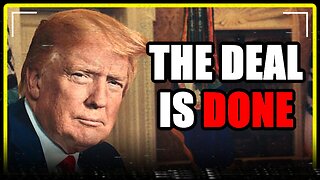 10:05
10:05
MattMorseTV
14 hours ago $10.65 earnedHe actually did it...
76.5K36 -
 LIVE
LIVE
Midnight In The Mountains
59 minutes agoMorning Coffee w/ Midnight & The Early Birds of Rumble | Tsunami's Railing Cali ...
86 watching -
 2:20:02
2:20:02
Side Scrollers Podcast
19 hours agoSYDNEY SWEENEY JEANS CONTROVERSY BREAKS THE INTERNET + TWITCH APOCALYPSE + MORE | SIDE SCROLLERS
77.6K15 -
 3:10:02
3:10:02
Price of Reason
14 hours agoTrump Tariffs Are GOOD? Syndey Sweeney Faces WOKE Backlash! Fantastic Four FLOPS! Mouthwashing BAN!
5.83K6 -
 2:04:55
2:04:55
svgames
2 hours ago🟢LIVE - TRIVIAA
4.3K1 -
 19:10
19:10
GritsGG
15 hours agoSolo Warzone 30 Bomb!
11.5K3 -
 2:28:39
2:28:39
LimpStinker
3 hours agoZelda BOTW on Switch 2
3.99K
